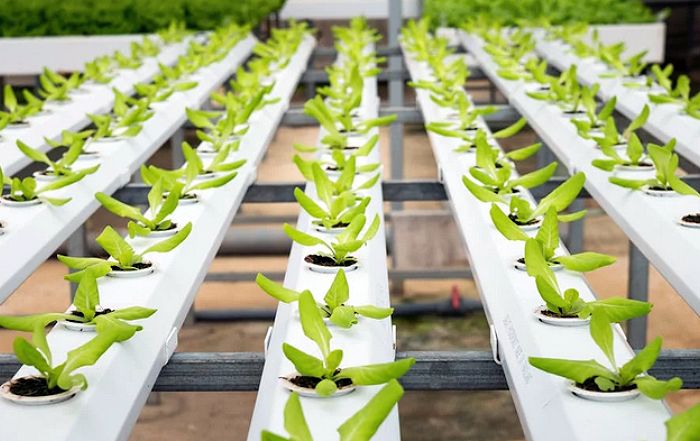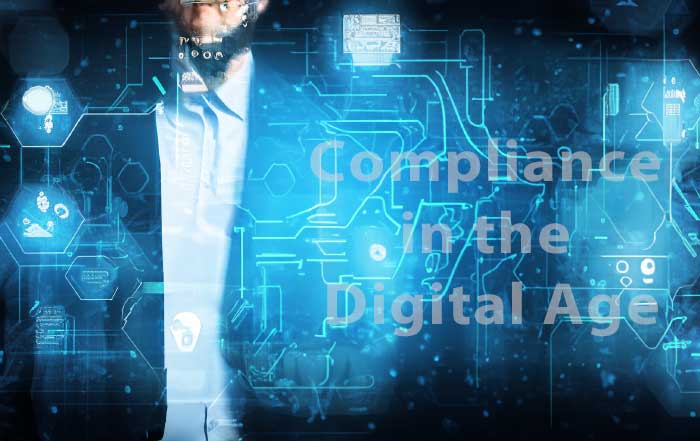In a rapidly evolving world where environmental concerns command urgent attention, YouSaveOurWorld.com presents this focused analysis illustrating how breakthroughs in plastic recycling technologies are reshaping sustainable living and business strategies across continents. The article maintains an authoritative and trustworthy tone, weaving in-depth insights with evidence from high-quality external sources, as well as internal resources.
Emerging Plastic Recycling Techniques: From Laboratory to Market
Plastic recycling has advanced significantly by 2025, with technologies bridging the gap between experimental promise and scalable implementation. Among the most compelling innovations is the refinement of chemical recycling methods such as pyrolysis and depolymerization, which break down plastics into monomers or fuels. These processes have matured to the point where they rival traditional recycling in cost-effectiveness and environmental performance, particularly in processing mixed or contaminated plastic waste streams.
Companies like Plastic Energy have scaled commercial operations converting hard-to-recycle plastics into oil and monomers, supporting circular economy principles while reducing reliance on virgin fossil feedstocks. Technological improvements have enhanced process energy efficiency and lowered greenhouse gas emissions, achieving measurable life-cycle gains. Learn more about sustainable business collaborations.
In parallel, catalytic hydro cracking techniques spearheaded by research groups at institutions such as the Imperial College London and Fraunhofer Institute deliver promising yields of plastic-derived BTX (benzene, toluene, xylene) used in chemical manufacturing. These collaborations underscore how academic–industry partnerships enhance the trustworthiness and expertise of emerging solutions. See the latest studies from the United Nations Environment Programme and Ellen MacArthur Foundation for performance benchmarks and impact evaluations.
Further innovation lies in enzymatic recycling, where tailor-made enzymes accelerate the breakdown of polyethylene terephthalate (PET) and other polymers under mild conditions. One notable achievement is the engineered variant of PETase achieving an 80 percent degradation of PET in hours rather than days, a step-change in greenhouse impact reduction. These enzymes now operate within closed-loop systems, facilitating effective material recovery with low energy inputs.
The convergence of these emerging technologies—chemical, catalytic, enzymatic—is reinforcing confidence among sustainable businesses and investors worldwide. Across the United States, United Kingdom, Germany, and other leading markets, companies are investing to drive commercial-scale plants and pilot programs.
Regional Perspectives: Diverse Approaches Yield Global Leadership
Different regions are pioneering unique strategies in plastic recycling innovation and implementation.
United States & Canada
In North America, industry leaders and startups have accelerated deployment of chemical recycling plants. Firms such as Agilyx and Brightmark Energy have partnered with major consumer goods corporations to valorize mixed plastic waste streams. These collaborations incorporate environmental impact audits and transparent reporting, reinforcing credibility and accountability.
In Canada, the expansion of PET enzymatic recycling facilities underscores a commitment to technological leadership in sustainability. Government grants and research consortiums are fostering linkages between academic expertise and operational excellence.
Europe: UK, Germany, France, Netherlands, Switzerland, Sweden, Norway, Denmark
European nations continue to lead through rigorous environmental standards and research-driven innovation. For example, laboratories affiliated with the Fraunhofer Society in Germany have expanded catalytic conversion pilot plants, while Imperial College London has scaled enzymatic recycling trials targeting national waste management challenges. Governments in France and the Netherlands reinforce these efforts with policy frameworks encouraging investment in advanced recycling infrastructure—boosting trust and reinforcing a regional commitment to circular economy leadership.
Scandinavian nations such as Sweden, Norway, and Denmark are also integrating chemical recycling outputs into cleaner energy systems and sustainable manufacturing value chains. Europe’s consistent tracking and transparent reporting of environmental outcomes alleviate stakeholder concerns while fostering expertise-led credibility. For further context on sustainable business frameworks, visit our internal section on sustainable-business.
🔄 Plastic Recycling Innovation Timeline
Journey through breakthrough technologies reshaping sustainable business
🧪 Chemical Recycling Emergence
Pyrolysis and depolymerization technologies mature from experimental to commercial scale, with companies like Plastic Energy leading the transition.
⚗️ Catalytic Breakthroughs
Imperial College London and Fraunhofer Institute achieve promising yields in catalytic hydro cracking, producing BTX chemicals from plastic waste.
🦠 Enzymatic Revolution
Engineered PETase variants achieve 80% PET degradation in hours, revolutionizing enzymatic recycling with low energy closed-loop systems.
🌐 Global Market Expansion
Chemical recycling market projected to exceed $20 billion with 10% annual growth. Corporate sustainability pledges drive massive investment.
🤖 AI Integration
Machine learning revolutionizes waste sorting with precision plastic identification, while blockchain ensures supply chain transparency.
🏢 Corporate Leadership
Unilever, Coca-Cola, and BASF scale recycling partnerships, demonstrating how multinationals integrate advanced recycling into global supply chains.
🌍 Policy Alignment
UN Global Plastics Treaty negotiations and EU Circular Economy Action Plan create regulatory frameworks supporting recycling innovation.
🚀 Future Vision
Recycled plastics projected to account for over 50% of packaging in leading markets, with hybrid systems combining all recycling methods.
Asia-Pacific: Australia, Singapore, South Korea, Japan, Malaysia, Thailand
In the Asia-Pacific region, innovative recycling technologies are gaining traction. Japan and South Korea have long-standing expertise in materials science, and release updates on enzymatic and advanced pyrolysis solutions tailored to combat marine plastic debris. Singapore serves as a regional hub, leveraging biotechnology innovation for recycling while shaping regulatory frameworks. Australia, Malaysia, and Thailand embrace pilot projects to modernize their plastic waste infrastructure, supported by circular economy partnerships.
Collectively, Asia-Pacific's progress emphasizes scalable solutions adapted to high-plastic-waste contexts, bolstered by investments in trustworthy research and entrepreneurial ventures.
Oceania, Latin America, Africa
In Australia and New Zealand, green technology investors support chemical and enzymatic recycling facilities. In Brazil and parts of South America, public–private collaborations deploy modular pyrolysis units in communities with limited access to centralized recycling systems, enhancing both environmental awareness and local economic opportunity. Select pilot initiatives in South Africa and other African nations leverage low-carbon catalytic recycling to address plastic pollution in coastal and rural regions, demonstrating how sustainable innovation nurtures trust and competence in developing markets.
Internal sections on environmental-awareness and global perspectives offer further discussion on these regional dynamics.
Impacts on Sustainable Living, Business, and Climate Action
Enabling Sustainable Living
Advanced plastic recycling technologies are reshaping daily life by increasing accessibility to recycled-content products. Enhanced supply of recycled monomers and resins supports the expansion of eco-friendly packaging, clothing fibers, and consumer goods. These developments help individuals adopt lower-impact choices in regions spanning the United States to Europe, Asia, and beyond.
Consumers benefit from transparent labeling based on verified recycled content, facilitated by tech-enabled traceability solutions, including blockchain platforms ensuring chain-of-custody clarity. Such transparency bolsters confidence in recycled products, empowering responsible consumption.
Sustainable Business Transformation
Businesses worldwide, from startups to multinational corporations, are incorporating cutting-edge recycling workflows into supply chain strategies. Organizations now pursue “renewable recycling” models—feeding chemically or enzymatically recovered materials directly back into manufacturing. This reduces upstream emissions, fulfills ESG (Environmental, Social, Governance) goals, and signals competitive differentiation within global markets.
The success of these strategies depends on robust data, regulatory clarity, and operational excellence. Companies publishing impact assessments and third-party verifications—such as life-cycle analysis reports—enhance credibility and build organizational trust. Sustainable-business stakeholders can access additional resources via our internal portal to support ESG-driven recycling initiatives.
Relevance to Climate Change Mitigation
Plastic production and disposal contribute significantly to global greenhouse gas emissions. By displacing virgin plastic production, advanced recycling technologies offer immediate climate benefits. For example, converting waste plastics back into feedstock for packaging resins eliminates steps in the fossil fuel extraction and refining chain, delivering emissions reductions estimated at 40–70 percent relative to virgin polymer production.
When integrated with renewable energy and low-carbon processing, chemical and enzymatic recycling systems further shrink plastic’s climate footprint. Studies from sources like the International Energy Agency and World Economic Forum provide compelling data on the comparative emissions profiles of advanced recycling pathways, reinforcing arguments for investment. Learn more about how recycling innovations align with broader climate-change strategies.
Building Trust through Expertise and Authoritativeness
Scientific Rigor and Peer-Reviewed Research
Recent years have seen notable publications in sustainability science and environmental engineering journals. These peer-reviewed studies validate technological advances in recycling enzymes, catalysts, and process optimization, lending credibility to industrial adoption. Collaboration between leading universities and firms underscores the importance of multidisciplinary expertise in refining and scaling innovations.
Policy Alignment and Standards
Governments and intergovernmental bodies are establishing guidelines that promote technological neutrality—recognizing a variety of recycling methods beyond mechanical processes. Regulatory frameworks in the European Union's Circular Economy Action Plan and the United States' Infrastructure Investment and Jobs Act (IIJA) now allocate funding to chemical recycling research and deployment. Such policymaking heightens industry accountability and promotes transparency.
Transparency and Reporting
Stakeholders increasingly demand full-chain disclosures—from feedstock sources to emissions impacts. Leading companies publish sustainability reports, third-party assessments, and open data to demonstrate integrity and reinforce trust. This culture of transparency builds resilience and reinforces the authoritative positioning of plastic recycling as a critical pillar in the sustainability infrastructure.
Related Internal Resources for Readers
Readers with interest in further exploring related themes may consult these sections on YouSaveOurWorld.com:
Internal insights into sustainable living and practical solutions: sustainable-living
Detailed discussion of industry incentives and recycling models: sustainable-business
Broad coverage of environmental awareness campaigns and trends: environmental-awareness
Insights into innovations in plastic processing and recycling: innovation
Guidance on reducing waste and promoting circular principles: waste
Investment, Economics, and Market Dynamics of Recycling Technologies
Investor Confidence and Market Growth
By 2025, global investment in plastic recycling technologies has entered a new growth phase. According to leading market intelligence providers, the global chemical recycling market is projected to exceed $20 billion by the end of the decade, with a compound annual growth rate of more than 10 percent. This momentum is being driven by corporate sustainability pledges, investor alignment with ESG principles, and consumer demand for greener products.
Venture capital and institutional investors are placing confidence in startups advancing enzymatic recycling and catalytic processes. These funding commitments are not speculative; they are grounded in the proven scalability of pilot plants and demonstrated commercial operations in Europe, North America, and Asia. The influx of capital also reflects recognition that recycling innovation is not merely an environmental necessity but a strategic market opportunity. Learn more about how innovation intersects with sustainable business in our dedicated section on innovation.
Cost Competitiveness and Policy Incentives
Traditional mechanical recycling remains cost-effective in processing clean, single-type plastics such as PET bottles. However, it struggles with multi-layer packaging, films, and contaminated waste streams. Advanced recycling methods, once considered too costly, have significantly narrowed the cost gap through process optimization and scale.
Government incentives further improve economics. The European Union’s Circular Economy Action Plan offers subsidies and tax credits for chemical recycling infrastructure, while the United States Environmental Protection Agency (EPA) provides grants for local governments and organizations adopting innovative recycling systems. Countries such as Germany and South Korea have enacted extended producer responsibility (EPR) schemes that make manufacturers financially responsible for end-of-life plastic, creating new demand for recycling technologies.
When viewed together, these developments indicate that cost competitiveness is no longer an obstacle but rather a catalyst for accelerated adoption. Businesses integrating advanced recycling into supply chains not only comply with regulations but also gain reputational and operational advantages. Explore more insights on sustainable-business.
Trade, Exports, and Global Circular Value Chains
Global trade in recycled plastics is evolving in response to shifting regulations. The Basel Convention now restricts the export of contaminated plastics, requiring countries to handle more of their waste domestically. This has driven significant investment in local recycling capacity. Meanwhile, companies in Europe and Asia are pioneering circular value chains, exporting recycled feedstock rather than raw waste, aligning with transparent and environmentally sound practices.
The United States, Canada, and Japan are leading exporters of advanced recycling technologies themselves, building trust by supporting global adoption. Such trade dynamics not only create jobs but also contribute to reducing the carbon intensity of supply chains worldwide.
Technology Integration with Digital Solutions
Artificial Intelligence and Machine Learning
Artificial intelligence has emerged as a crucial enabler in waste sorting and recycling optimization. Machine learning models trained on vast datasets now power automated sorting systems capable of distinguishing plastic types with remarkable precision. This advancement improves feedstock purity for recycling plants and lowers contamination rates, resulting in higher yields of quality recycled resin.
Startups and established technology companies alike are integrating robotics with AI vision systems to achieve faster, more reliable sorting. This integration not only reduces labor costs but also enhances worker safety in recycling facilities. AI-driven predictive analytics also help operators forecast feedstock availability and optimize energy use, further reducing emissions. Learn more about technology-driven sustainability at our internal page on technology.
Blockchain for Transparency
Blockchain technology is increasingly used to ensure traceability and transparency in recycled plastic supply chains. By creating immutable records of material flows, blockchain platforms provide stakeholders—from manufacturers to regulators and consumers—with assurance about the origin and quality of recycled content.
For example, Circularise, a European blockchain provider, works with major chemical companies to implement traceability systems that track polymers from waste to finished product. Such systems enable businesses to verify compliance with environmental regulations, meet corporate sustainability commitments, and reinforce consumer trust.
Internet of Things (IoT) and Smart Sensors
The Internet of Things (IoT) adds another layer of efficiency by enabling real-time monitoring of recycling plant operations. Smart sensors track temperature, pressure, and throughput in chemical recycling reactors, allowing operators to adjust conditions for optimal efficiency. Municipalities are also adopting IoT-enabled bins that sort or compact waste at the point of collection, improving upstream efficiency and lowering logistics costs.
Together, AI, blockchain, and IoT integration transform plastic recycling from a mechanical process into a digitally enhanced, trustworthy infrastructure. For further exploration, readers can consult our coverage on sustainable-living for practical applications of these innovations.
Corporate Case Studies: Leaders in Plastic Recycling Innovation
Unilever and Circular Packaging
Unilever has committed to ensuring that 100 percent of its plastic packaging is reusable, recyclable, or compostable by 2025. The company has scaled chemical recycling partnerships with advanced technology providers to transform flexible films and sachets into new feedstock. By embedding these processes into its packaging lines, Unilever exemplifies how multinational corporations can leverage innovation while earning consumer trust through transparent reporting.
Coca-Cola and PET Enzymatic Recycling
Coca-Cola has been a prominent partner in enzymatic recycling initiatives. Collaborating with technology firms, Coca-Cola has tested enzymatically recycled PET in bottles across Europe and Asia. This closed-loop approach not only reduces reliance on virgin plastic but also demonstrates how multinational brands can operationalize advanced recycling at scale.
BASF and Industrial Partnerships
German chemical giant BASF has invested heavily in catalytic recycling technologies. Through its ChemCycling™ project, BASF converts waste plastics into syngas and oil, which serve as feedstocks for high-quality chemical production. These projects, conducted in collaboration with municipalities and waste management firms, showcase how industrial-scale operations can contribute to building credible, large-scale recycling ecosystems.
Startups and Entrepreneurial Innovation
Beyond multinationals, startups are making remarkable strides. Firms like Carbios in France are commercializing PET-degrading enzymes, while Loop Industries in North America scales depolymerization processes. These companies highlight how entrepreneurial ventures, driven by innovation and agility, play a critical role in transforming the recycling landscape.
Case studies illustrate the importance of collaboration, transparency, and technological rigor in advancing recycling credibility. Interested readers can find related insights on environmental-awareness.
Consumer Engagement and Behavioral Shifts
Education and Awareness Campaigns
Advanced recycling technologies can only succeed when matched with consumer participation. Public education campaigns in the United States, United Kingdom, Germany, and across Asia emphasize the importance of proper waste sorting and responsible consumption. Transparent information about recycled content in products also empowers consumers to make environmentally conscious purchasing decisions.
Platforms like Plastic Bank incentivize waste collection by providing financial rewards to individuals in developing economies. Such initiatives integrate social impact with environmental benefits, reinforcing trust among stakeholders. Explore our internal portal on climate-change to understand how plastic recycling intersects with global climate strategies.
Lifestyle Transformation
Recycling innovations also influence sustainable lifestyle choices. The growing market for clothing and footwear made from recycled plastics demonstrates how consumers align personal identity with eco-conscious practices. Sportswear brands like Adidas and Nike now offer apparel containing significant portions of ocean-recovered plastic, giving individuals the opportunity to integrate sustainability into daily routines.
Access to reliable information through digital channels, combined with the credibility of certified recycled products, enables households worldwide to transform awareness into action. Readers interested in exploring these lifestyle dimensions may consult lifestyle.
Policy Frameworks and International Cooperation
Global Agreements and Standards
The progress of advanced plastic recycling technologies has been accelerated by international agreements and policy frameworks. One of the most significant milestones is the United Nations Global Plastics Treaty, under negotiation in 2025, which aims to establish binding commitments on reducing plastic pollution and scaling recycling infrastructure worldwide. Updates can be followed on the UN Environment Programme website, which tracks treaty negotiations and reports on national commitments.
The European Union’s Circular Economy Action Plan has continued to set ambitious recycling targets, mandating minimum recycled content in packaging and incentivizing investment in chemical recycling infrastructure. Full details are published on the European Commission portal, where transparent legislative updates foster accountability.
Similarly, in North America, the U.S. Environmental Protection Agency has launched initiatives under its National Recycling Strategy to promote chemical and enzymatic recycling, aligning with federal investment packages under the Infrastructure Investment and Jobs Act (IIJA). These frameworks show how global regions are using regulatory levers to create trust, enforce standards, and channel resources toward innovative recycling.
Asia-Pacific Leadership
In Asia, Japan’s Ministry of the Environment has emphasized marine plastic waste reduction through advanced pyrolysis systems, publishing guidelines on their official website. South Korea has also introduced legislation mandating extended producer responsibility (EPR) systems for manufacturers, creating funding streams for recycling technology adoption.
Singapore, known for its innovation-driven sustainability policies, has positioned itself as a regional hub for recycling research, with details available at the National Environment Agency. By aligning policy with entrepreneurial innovation, these nations exemplify the integration of governance, business, and science.
International Cooperation
International cooperation plays an essential role. Organizations like the World Economic Forum (WEF) highlight collaborative efforts between governments and businesses to accelerate recycling. Readers can access WEF’s Plastics and Circular Economy initiative for insights into cross-border partnerships. Similarly, the Organisation for Economic Co-operation and Development (OECD) publishes analyses on plastic waste management, available through the OECD Environment Directorate.
These cooperative structures reinforce expertise, trustworthiness, and the global commitment to addressing plastic pollution while unlocking new markets for sustainable business.
Challenges and Limitations in Scaling Recycling
Technical Limitations
Despite rapid advances, technical challenges remain. Enzymatic recycling is still limited in its ability to handle mixed plastics outside PET. Pyrolysis technologies, while versatile, require careful management to avoid emissions leakage. Even catalytic depolymerization must address issues of feedstock variability and process costs. Academic research in this area can be explored via journals such as Nature Sustainability which publish peer-reviewed studies on efficiency and scalability.
Infrastructure Gaps
Many countries, especially in developing regions, lack the infrastructure necessary to support advanced recycling. Inconsistent waste collection, limited funding, and informal waste economies hinder large-scale adoption. Reports from the World Bank highlight these challenges, stressing the importance of integrating recycling into urban development planning.
Market and Consumer Trust
Consumers and businesses sometimes struggle to differentiate between credible recycling initiatives and greenwashing. Transparency is essential, and independent certification systems such as UL Environment and Cradle to Cradle Certified™ provide clarity. More information can be found on the Cradle to Cradle Products Innovation Institute. Ensuring transparency helps strengthen consumer trust and reinforces the authoritative role of advanced recycling in sustainable living.
Regulatory Hurdles
In some countries, outdated regulations fail to recognize chemical and enzymatic recycling as legitimate processes. For example, debates in the United States around whether chemical recycling should be classified as “recycling” or “waste-to-energy” have slowed adoption in certain states. This tension is covered in depth by organizations like the Environmental Defense Fund.
Without regulatory alignment, innovation risks being stalled, underlining the importance of coordinated policymaking that balances environmental integrity with economic opportunity.
Future Innovations and Pathways Toward a Circular Economy
Biodegradable Plastics Integration
While recycling focuses on recovering value from existing plastics, parallel advances in biodegradable plastics are emerging. Materials such as polylactic acid (PLA) and polyhydroxyalkanoates (PHA) are increasingly designed to work within existing recycling systems, minimizing disruption. Research published by the American Chemical Society shows how blending biodegradable materials with recyclable polymers may accelerate circularity.
Hybrid Recycling Systems
The most promising future lies in hybrid systems that combine mechanical, chemical, and enzymatic recycling. Facilities capable of routing different waste streams through complementary processes maximize material recovery. Pilot projects demonstrating this integration are being tested in Germany, Japan, and Canada. By blending methods, hybrid systems offer resilience, scalability, and efficiency, creating a reliable backbone for global circular economies.
Digital Twins and Predictive Analytics
Another emerging innovation involves the use of digital twins—virtual models of recycling plants powered by real-time data. These simulations allow operators to forecast maintenance needs, optimize energy consumption, and test operational adjustments before implementing them physically. The International Energy Agency has explored digital twin applications in recycling, with insights available on their IEA website.
Global Supply Chain Transformation
Looking ahead, recycled plastics will increasingly replace virgin plastics in global supply chains. Companies are signing long-term contracts for recycled resins to guarantee supply stability. Brands like Adidas already commit to producing sneakers made entirely from ocean plastics, a trend tracked by National Geographic.
By 2030, experts predict that recycled plastics could account for more than half of all plastic packaging in leading markets, demonstrating a decisive shift toward circular economy models.
Conclusion: A Roadmap for Trustworthy Transformation
The future of plastic recycling is no longer a speculative concept but a practical reality underpinned by scientific rigor, market momentum, and policy support. Advanced technologies—chemical, catalytic, and enzymatic—are scaling globally, creating pathways for sustainable business, consumer empowerment, and climate action.
Yet challenges persist, from infrastructure deficits to regulatory misalignments. Addressing these requires transparent collaboration across governments, businesses, and civil society. Success will depend not only on technological breakthroughs but also on credibility, accountability, and the willingness of societies to prioritize long-term sustainability.
As YouSaveOurWorld.com emphasizes through its focus on sustainable-living, waste, and climate-change, the global community has the tools to transform plastic from a symbol of environmental degradation into a cornerstone of circular progress. The responsibility now lies in scaling these solutions with the expertise, authority, and trust that define meaningful change.








